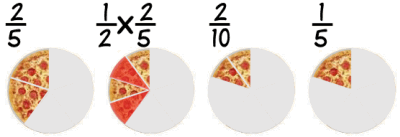The Seasons and Axis Tilt
The Earth's seasons are not caused by the differences in the distance from the Sun throughout the year (these differences are extremely small). The seasons are the result of the tilt of the Earth's axis.
The Earth's axis is tilted from perpendicular to the plane of the ecliptic by 23.45°. This tilting is what gives us the four seasons of the year - spring, summer, autumn (fall) and winter. Since the axis is tilted, different parts of the globe are oriented towards the Sun at different times of the year.
Summer is warmer than winter (in each hemisphere) because the Sun's rays hit the Earth at a more direct angle during summer than during winter and also because the days are much longer than the nights during the summer. During the winter, the Sun's rays hit the Earth at an extreme angle, and the days are very short. These effects are due to the tilt of the Earth's axis.
Solstices
The solstices are days when the Sun reaches its farthest northern and southern declinations. The winter solstice occurs on December 21 or 22 and marks the beginning of winter (this is the shortest day of the year). The summer solstice occurs on June 21 and marks the beginning of summer (this is the longest day of the year).
The solstices are days when the Sun reaches its farthest northern and southern declinations. The winter solstice occurs on December 21 or 22 and marks the beginning of winter (this is the shortest day of the year). The summer solstice occurs on June 21 and marks the beginning of summer (this is the longest day of the year).
Equinoxes
Equinoxes are days in which day and night are of equal duration. The two yearly equinoxes occur when the Sun crosses the celestial equator.
Equinoxes are days in which day and night are of equal duration. The two yearly equinoxes occur when the Sun crosses the celestial equator.
The vernal equinox occurs in late March (this is the beginning of spring in the Northern Hemisphere and the beginning of fall in the Southern Hemisphere); the autumnal equinox occurs in late September (this is the beginning of fall in the Northern Hemisphere and the beginning of spring in the Southern Hemisphere).
Source:http://www.enchantedlearning.com/subjects/astronomy/planets/earth/Seasons.shtml
Foundations of Algebra
Multiplying Fractions
Multiply the tops, multiply the bottoms.
There are 3 simple steps to multiply fractions
1. Multiply the top numbers (the numerators).
2. Multiply the bottom numbers (the denominators).
3. Simplify the fraction if needed.
With Pizza
Here you can see it with pizza ...

Do you see that half of two-fifths is two-tenths?
Do you also see that two-tenths is simpler as one-fifth?
Do you also see that two-tenths is simpler as one-fifth?
With Pen and Paper
And here is how to do it with a pen and paper (press the play button):
The Rhyme
♫ "Multiplying fractions: no big problem,
Top times top over bottom times bottom.
"And don't forget to simplify,
Before it's time to say goodbye" ♫
Top times top over bottom times bottom.
"And don't forget to simplify,
Before it's time to say goodbye" ♫
Fractions and Whole Numbers
What about multiplying fractions and whole numbers?
Make the whole number a fraction, by putting it over 1.
Example: 5 is also 51
Then continue as before.
Or you can just think of the whole number as being a "top" number:
Source: https://www.mathsisfun.com/fractions_multiplication.html
No comments:
Post a Comment